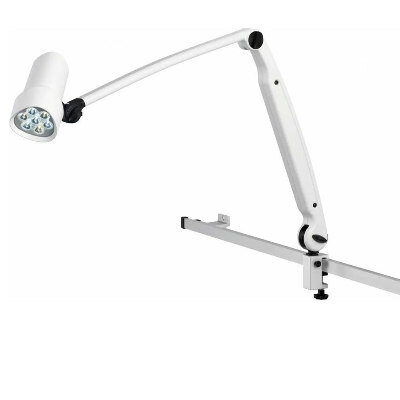Solid Titanium Interbody Augments Cervical Discectomy
By HospiMedica International staff writers
Posted on 14 Oct 2016
A new titanium cervical interbody features a large graft window, which allows for the usage of maximum bone graft material.Posted on 14 Oct 2016
The uCerv titanium implant device is indicated for intervertebral anterior cervical discectomy and fusion (ACDF) procedures in skeletally mature patients with degenerative disc disease (DDD) of the cervical spine at one disc level, from C2-C3 to the C7-T1 disc. The implants have a roughened-surface design with a trapezoidal shape, and are available in parallel or lordotic (6o) configurations of various heights in small, medium, and large footprints. The implant is designed for use with supplemental fixation and with autograft to facilitate fusion.

Image: The uCerv titanium implant device (Photo courtesy of Ulrich Medical).
Features include a tapered bullet tip to allow for ease of insertion and self-distraction; aggressive teeth on the upper and lower surfaces to limit migration; increased wall thickness to enhance structural support; a large central core for maximum bone graft material; and a roughened surface for improved boney adherence. The uCerv titanium implant device is a product of Ulrich Medical (Chesterfield, MO, USA), and has been approved by the U.S. Food and Drug Administration (FDA).
“Spinal implants made from solid titanium alloy can support bone growth at the fusion site by providing proven and reliable structural integrity," said assistant professor of neurological surgery Ali Baaj, MD, of Weill Cornell Medical College (New York, NY, USA). “I like the easy-to-use uCerv instrumentation which incorporates a slim designed inserter that allows for superior visualization and unimpeded work space at the surgical site.”
ACDF involves the removal of a cervical disc herniation through an anterior approach with concomitant surgical decompression to relieve spinal cord or nerve root pressure and alleviate corresponding pain, weakness, numbness and tingling. Fusion surgery is done at the same time as the discectomy in order to stabilize the cervical segment. While there are a number of potential risks and complications with ACDF surgery, the main postoperative problem is difficulty swallowing for 2-5 days due to retraction of the esophagus during the surgery.
Related Links:
Ulrich Medical














